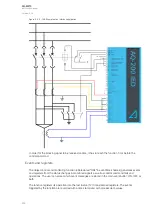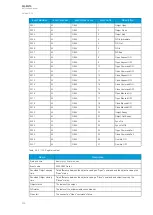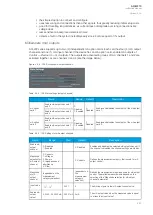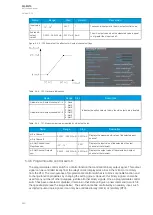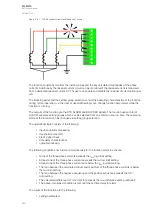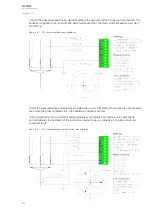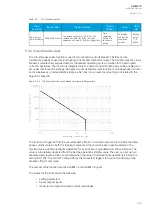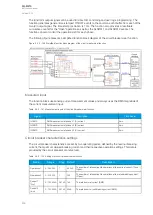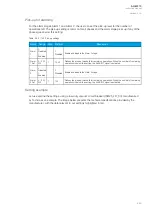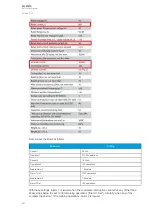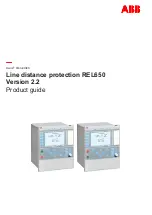
Name
Range
Step Default
Description
Scaled output
value 1
-10
7
...10
7
0.000
01
0
Scales the measured milliampere signal at Point 2.
Add
curvepoint
3...20
0: Not
used
1: Used
-
0: Not
used
Allows the user to create their own curve with up to twenty (20) curve
points, instead of using a linear curve between two points.
5.4.7 Logical outputs
Logical outputs are used for sending binary signals out from a logic that has been built in the logic
editor. Logical signals can be used for blocking functions, changing setting groups, controlling digital
outputs, activating LEDs, etc. The status of logical outputs can also be reported to a SCADA system.
The figure below presents a logic output example where a signal from the circuit breaker failure
protection function controls the digital output relay number 5 ("OUT5") when the circuit breaker's cart
status is "In". The image above is from the logic editor and the image below from AQtivate 200.
Figure. 5.4.7 - 151. Logic output example.
5.4.8 Logical inputs
Logical inputs are binary signals that a user can control manually to change the behavior of the
AQ-200 unit or to give direct control commands. Logical inputs can be controlled with a virtual switch
built in the mimic and from a SCADA system (IEC 61850, Modbus, IEC 101, etc.). Logical inputs are
volatile signals: their status will always return to "0" when the AQ-200 device is rebooted.
Logical inputs have two modes available: Hold and Pulse. When a logical input which has been set to
"Hold" mode is controlled to "1", the input will switch to status "1" and it stays in that status until it is
given a control command to go to status "0" or until the device is rebooted. When a logical input which
has been set to "Pulse" mode is controlled to "1", the input will switch to status "1" and return back to "0"
after 5 ms.
The figure below presents the operation of a logical input in Hold mode and in Pulse mode.
A
AQ
Q-M210
-M210
Instruction manual
Version: 2.04
247



